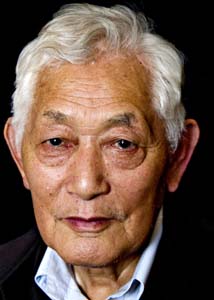Name: Thupten Woeser
(Alias: No)
Gender: Male
Interview Age: 80
Date of Birth: 1932
Birthplace: Minyak, Kham, Tibet
Year Left Tibet: 1959
Profession: Nomad
Monk/Nun: Previously
Political Prisoner: No

Interview No.: 36D
Date: 2012-05-21
Language: Tibetan
Location: Mcleod Ganj, Dharamsala, Himachal Pradesh, India
Categories: Buddhist Traditions
Keywords: Buddhist beliefs, childhood memories, Chinese -- first appearance of, Chinese -- oppression under, Chinese army -- invasion by , customs/traditions, Kham, monastic life, pilgrimage, resistance
Summary:
Thupten Woeser's family consisted of 17-18 members divided into two groups, one that worked as farmers and the other as nomads. He explains about this typical composition of family and its advantages. He became a monk at the age of 12 in a small monastery called Sikhu Gonpa. He talks about dividing his time between the monastery and his home. He also explains the religious studies and how he received the teaching called Lamday 'Path and its Fruit' from His Holiness Jigdal Dagchen Sakya Rinpoche.
Thupten Woeser recounts the first appearance of Chinese army in his region, the fleeing Nationalist soldiers and the Chinese policies in the early 1950's when Lhasa had not yet been invaded. People in his region were divided into five groups and subjected to praise or accusations depending on their status in society. Thupten Woeser's parents faced hardships during the liberation because the Chinese confiscated all of their possessions and farmland.
Thupten Woeser decided to not return home from the monastery, but instead accompanied His Holiness Jigdal Dagchen Sakya Rinpoche to Derge and eventually travelled to Lhasa. He recalls the various pilgrimage sites he attempted to visit while in Lhasa, which included Shigatse, Yarlung, Tsethang, Tandu and Samye. He then stayed at Sakya to continue his Buddhist studies until the unrest in Lhasa caused him to flee to Sikkim.
Interview Team:
- Marcella Adamski (Interviewer)
- Tenzin Yangchen (Interpreter)
- Pema Tashi (Videographer)

